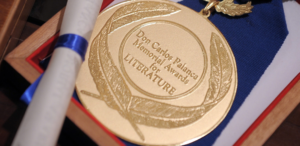The Bureau of Fisheries and Aquatic Resources – Region 5 (BFAR Bikol) strongly cautions the public, especially the fisherfolk and coastal communities, against the Devil Crab, a poisonous reef crab locally known as “liod” or “kaligmata.”
In a press release, BFAR Bicol cited reports sighting these hazardous crabs in Lagonoy, Camarines Sur; Mercedes, Camarines Norte; Cawayan, Masbate; and Gubat, Bulusan and Matnog in Sorsogon.
The Devil Crab, with scientific name Zosimus aeneus, is recognizable by its characteristic brownish blotches on a paler background.
This crab harbors neurotoxins, namely tetrodotoxin and saxitoxin, within its flesh and shell. These toxins are resistant to heat or cooking and can cause serious harm, including paralysis, respiratory difficulties, and even death within a short period.

BFAR Bicol expresses its gratitude to the fisherfolks for their vigilance and cooperation in reporting sightings of the poisonous crabs.
However, the public is strongly urged to adhere to the following guidelines to ensure safety.
- Educate yourself and others about the physical characteristics of the poisonous crab species, specifically the Devil Crab (Zosimus aeneus) and Floral Egg Crab (Atergatis floridus). Familiarize yourself with their appearance to accurately identify them.
- If you come across any sightings of poisonous crabs, promptly report them to the Provincial Fisheries Office (PFO) or your respective Local Government Units (LGUs). Timely reporting will enable us to closely monitor the situation and implement necessary measures to mitigate potential risks.
- Exercise utmost caution and refrain from direct contact with these crabs, particularly their pincers. It is crucial to avoid handling them without adequate protection, such as thick gloves or tools that maintain a safe distance.
- In the event of accidental contact or consumption of a poisonous crab, seek immediate medical attention if any symptoms or allergic reactions occur. Ensure the proper disposal of any captured poisonous crabs, keeping them out of the reach of children, pets, or unsuspecting individuals.
- BFAR-5 urges fisherfolk to share this vital information with fellow community members. By collectively spreading awareness about the potential hazards and adopting appropriate safety measures, we can foster a safer and more informed fishing environment.
BFAR-5 is fully committed to safeguarding the well-being of our fisherfolk and coastal communities. We will continue to closely monitor the situation and collaborate with local authorities, academic institutions, and relevant stakeholders to effectively address emerging challenges associated with the presence of poisonous crabs along our coastlines.





More Stories
Governor Hamor send off Sorsogon contingent to Palarong Bikol 2024
Gov. Mandanas of Batangas keynotes gov’t accountant’s conference in Sorsogon
Sorsogon has booming economy – PSA